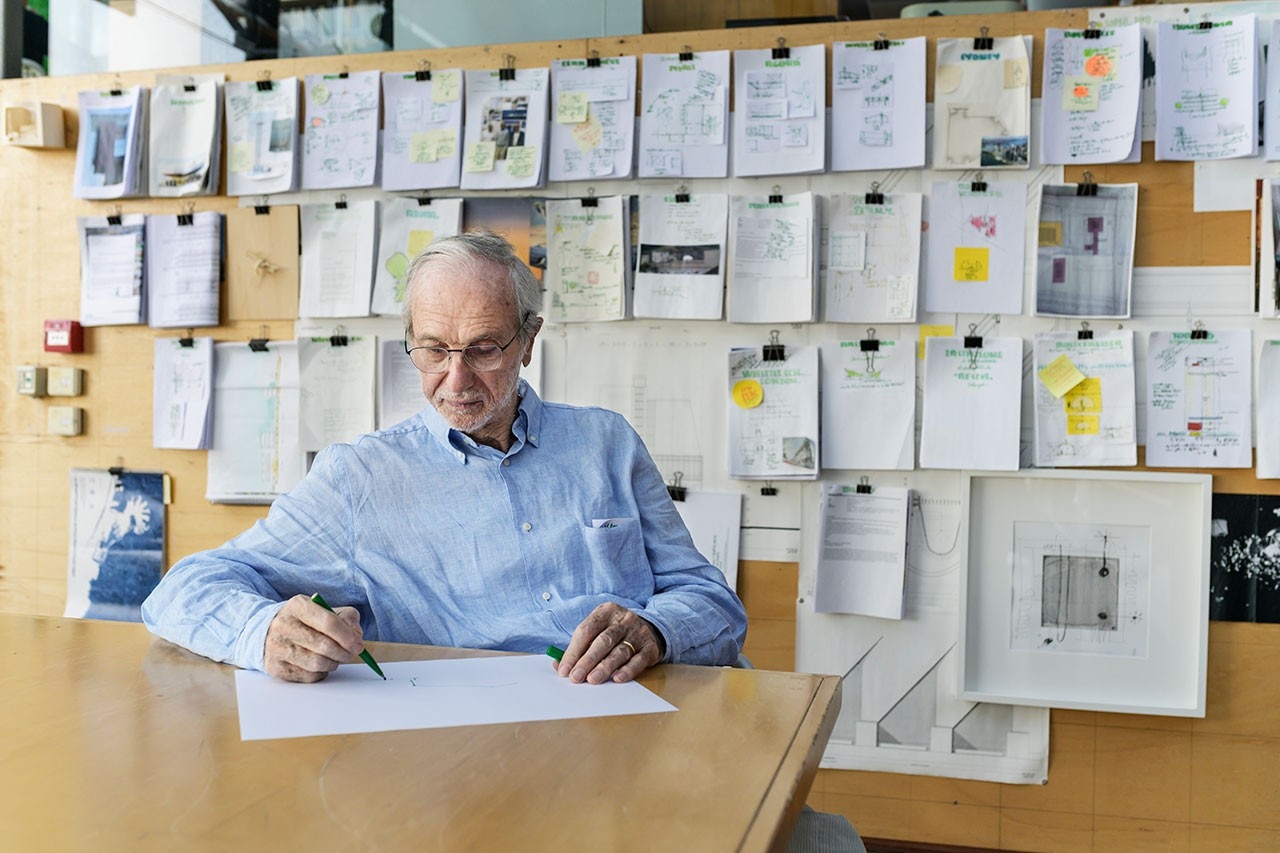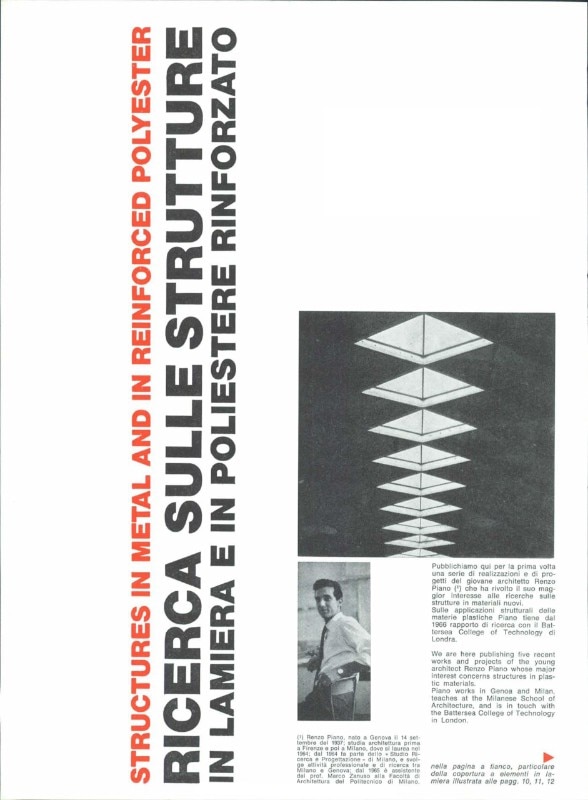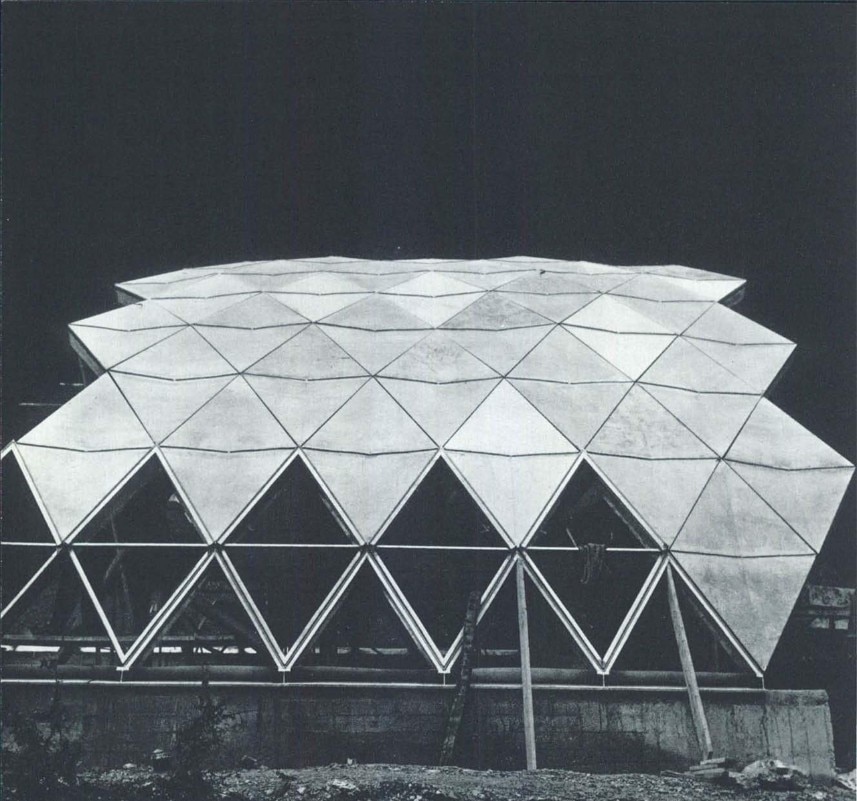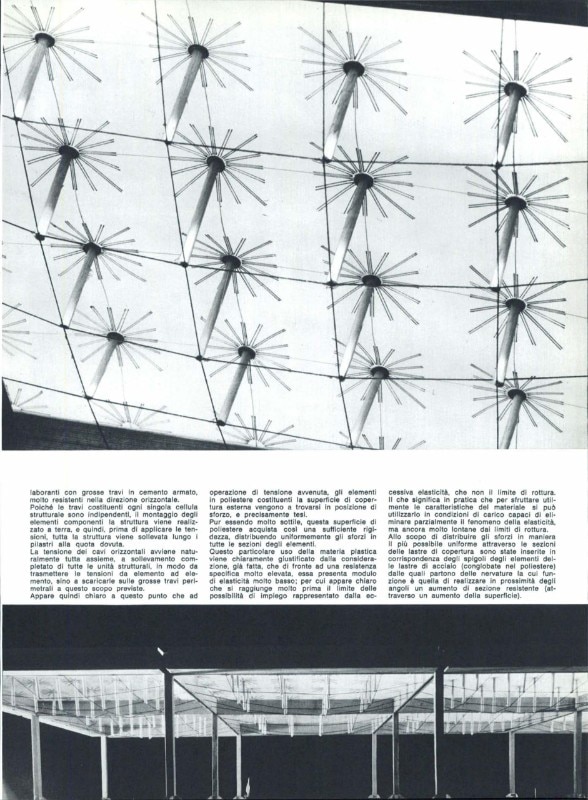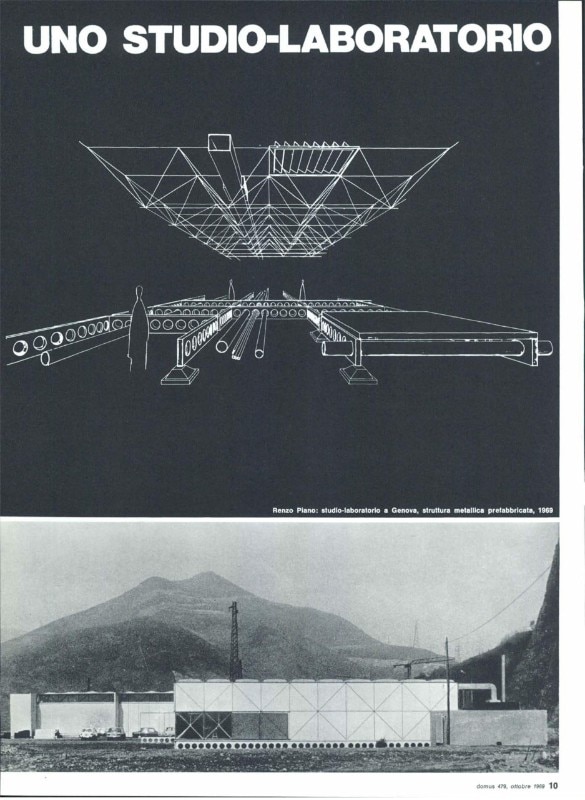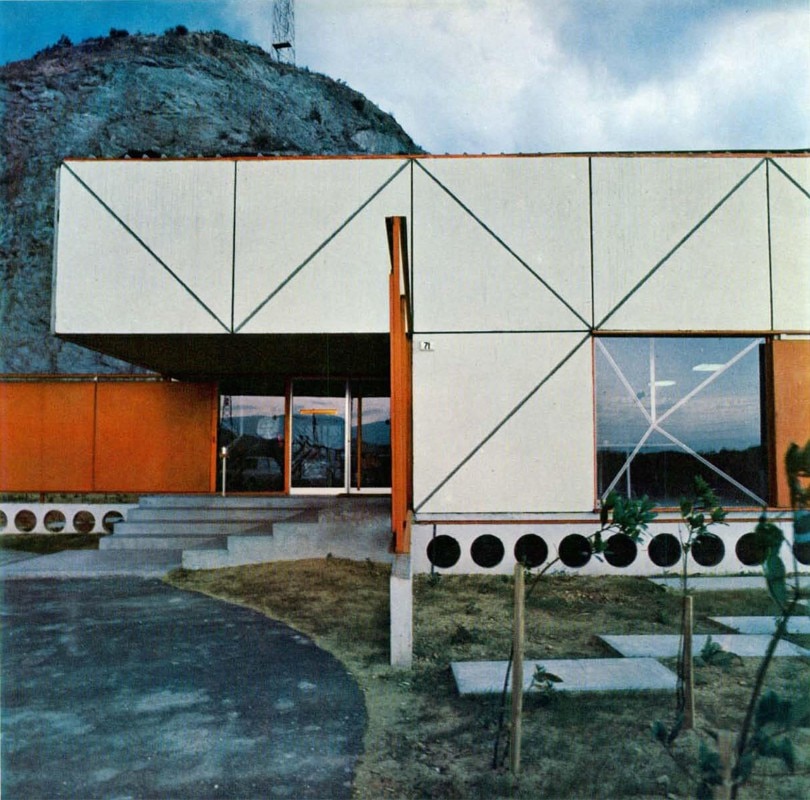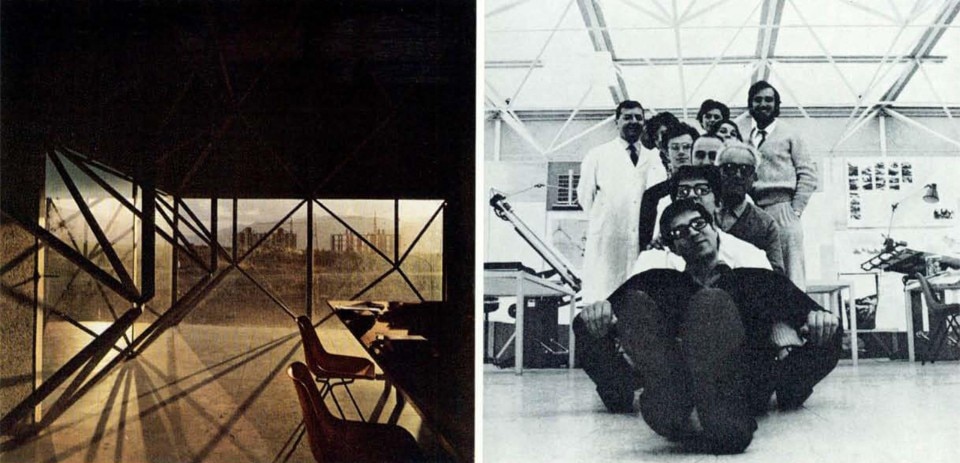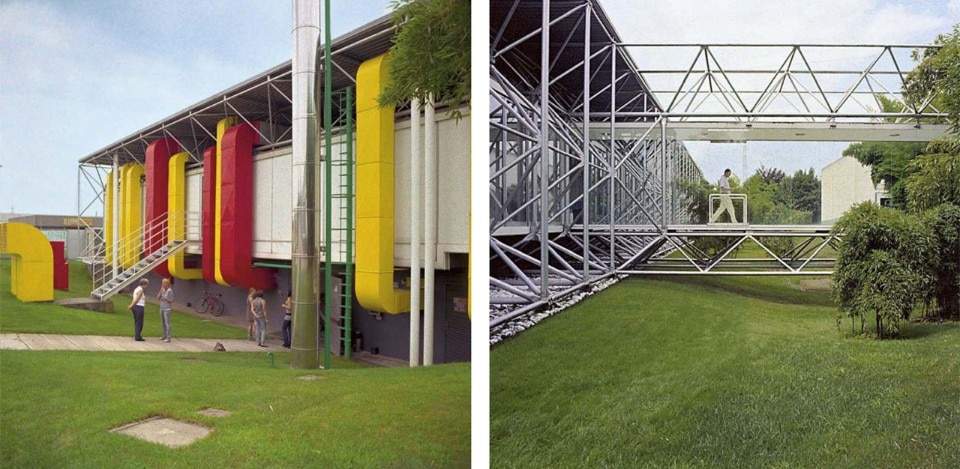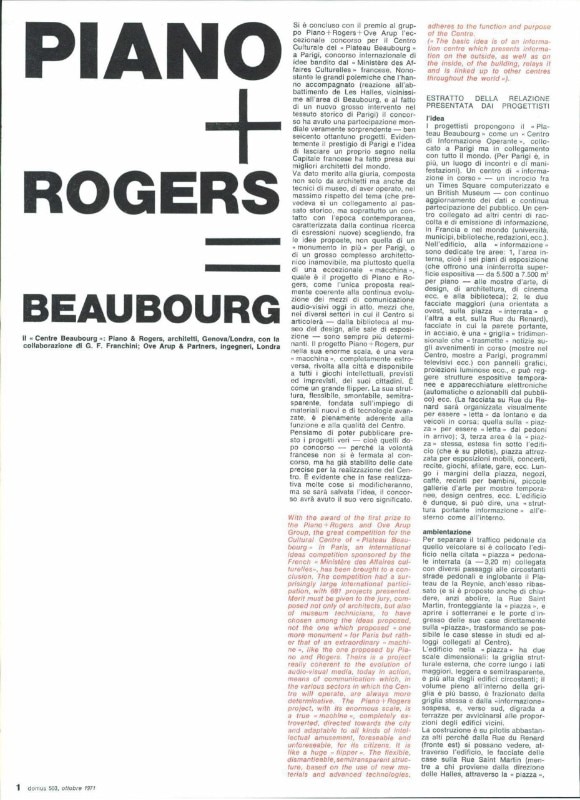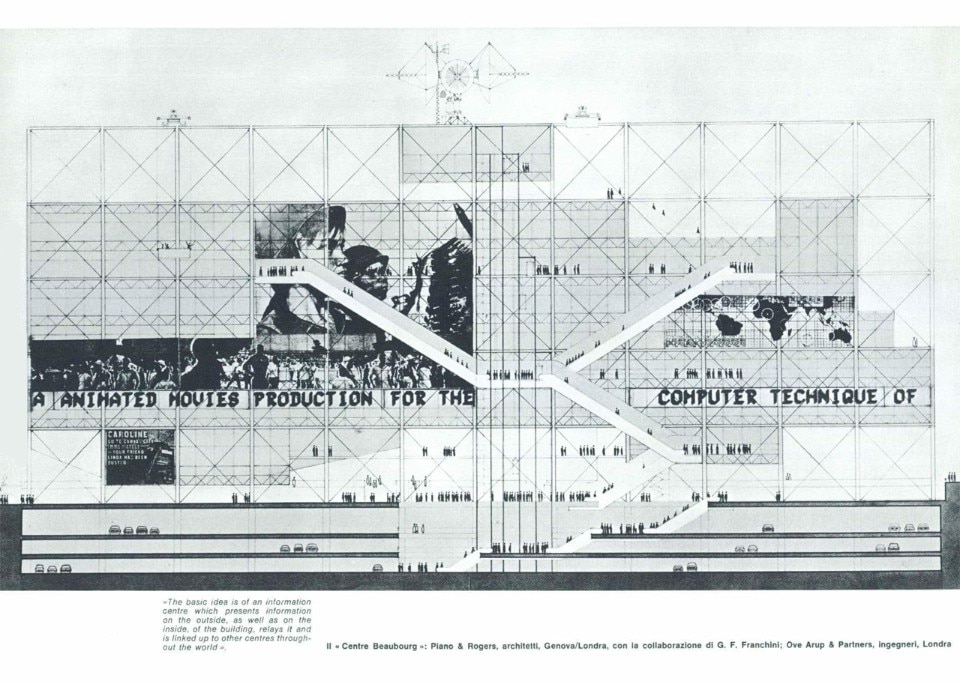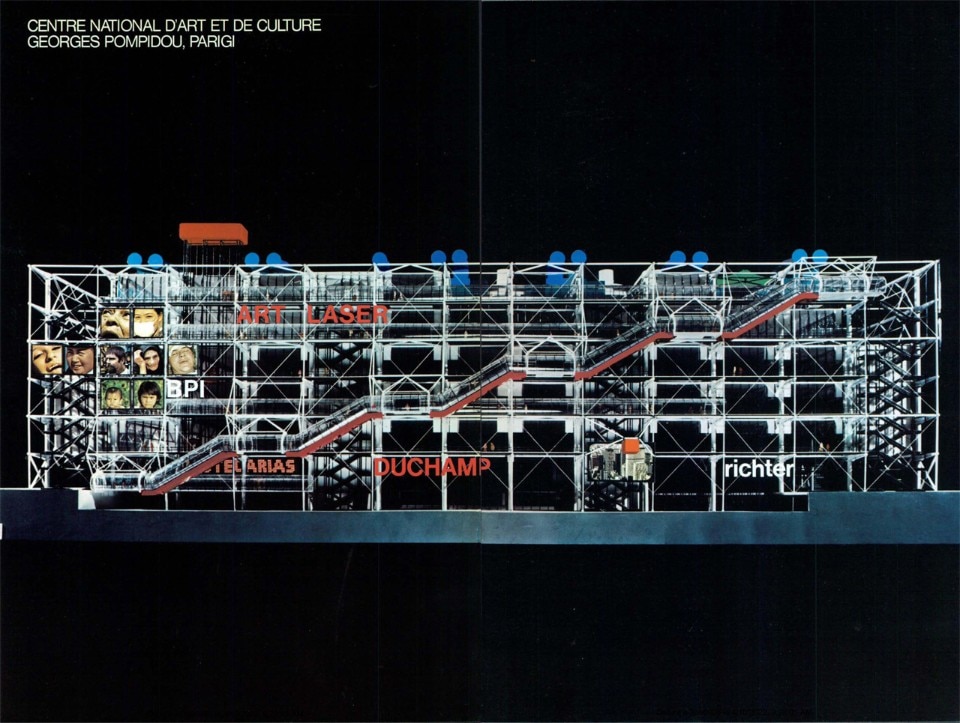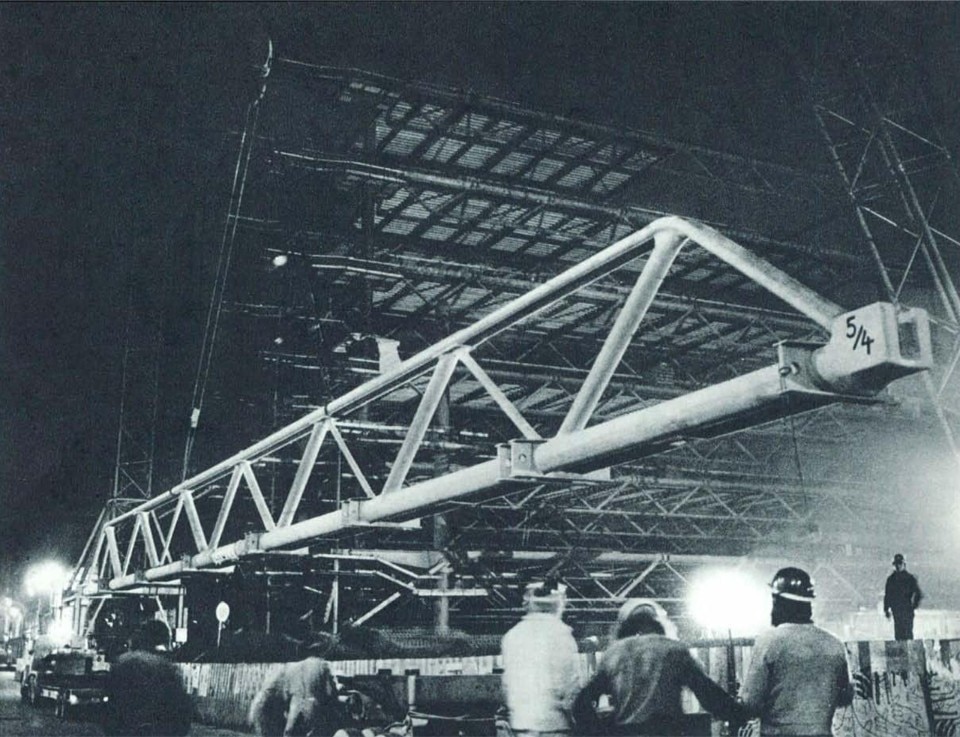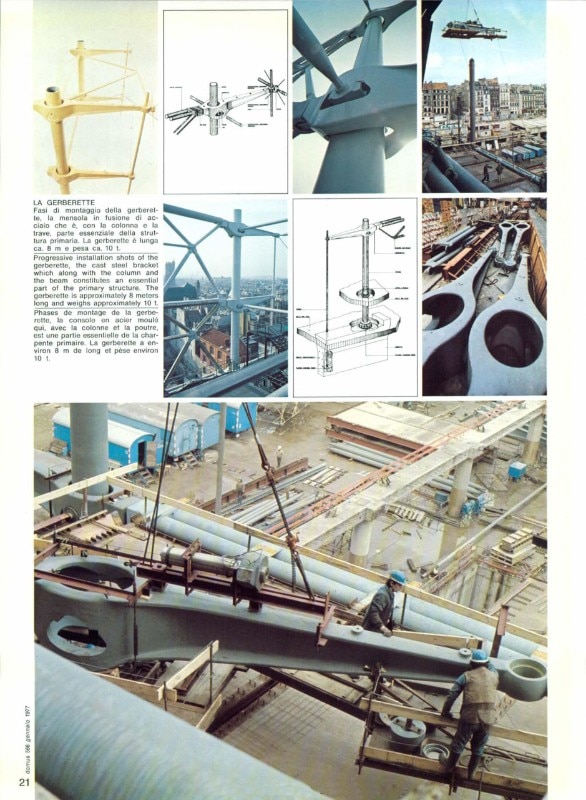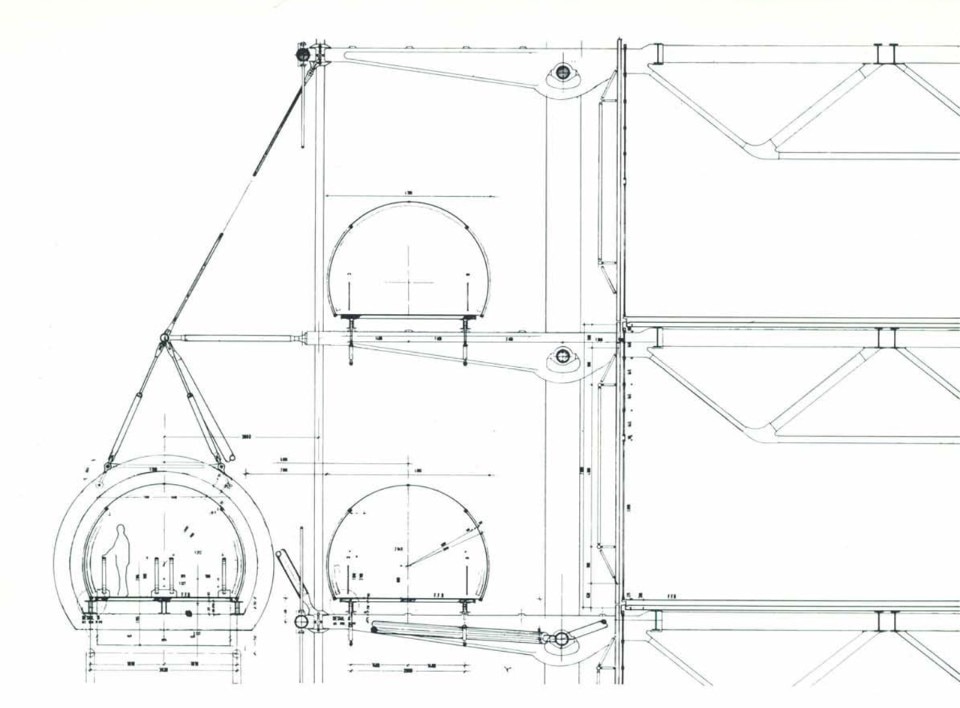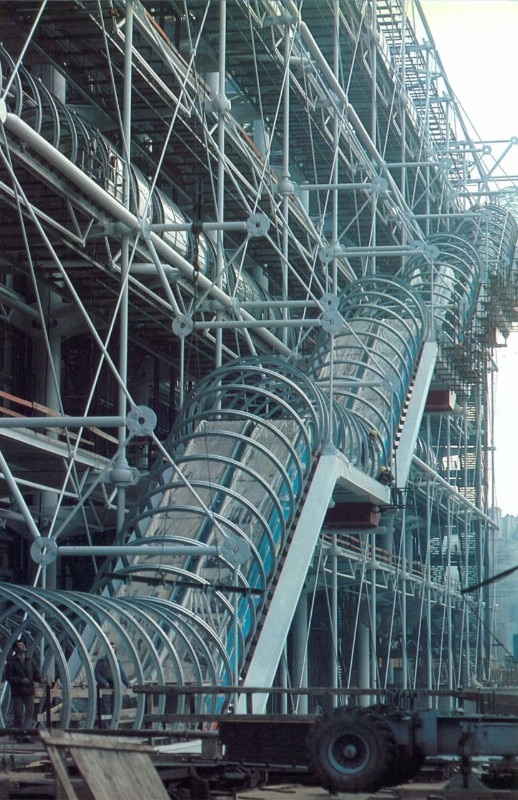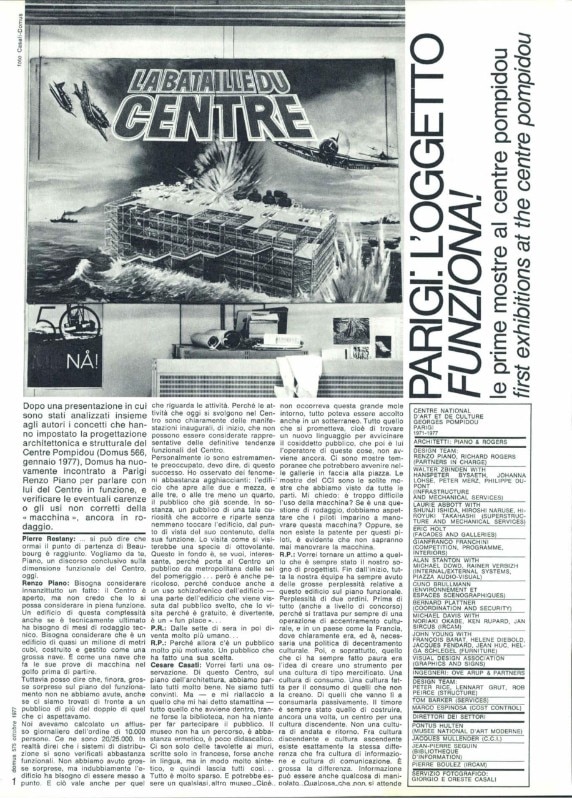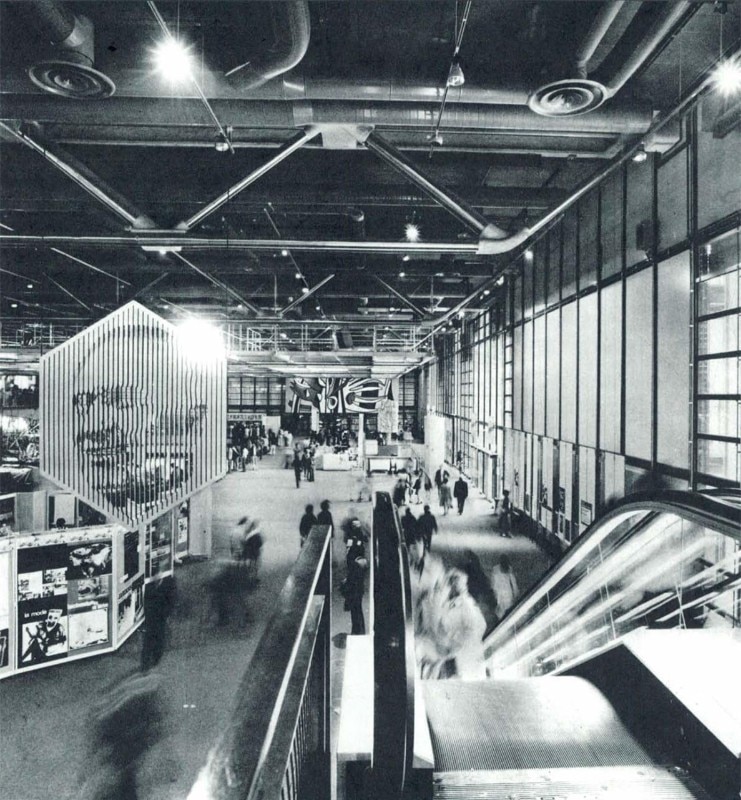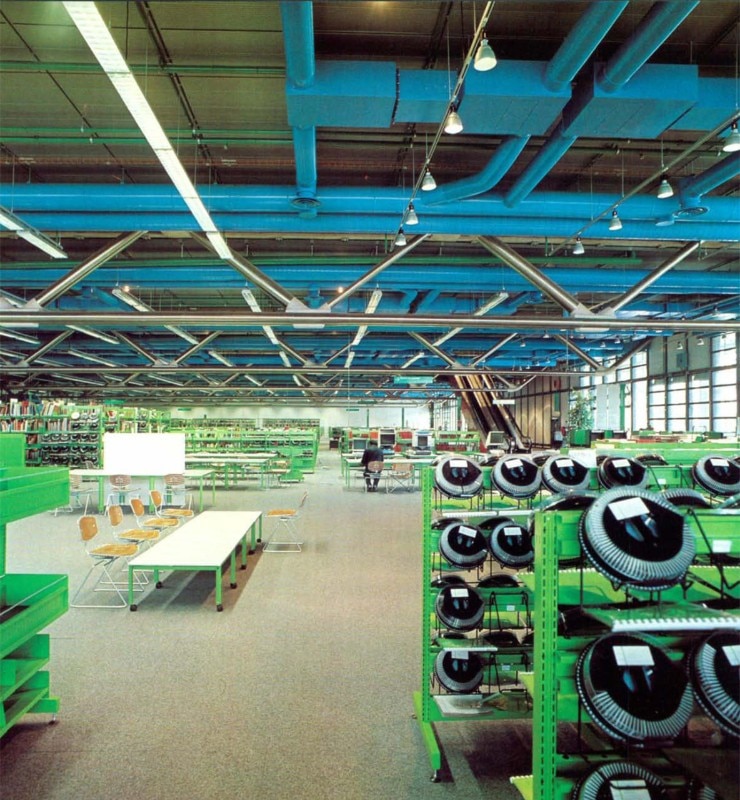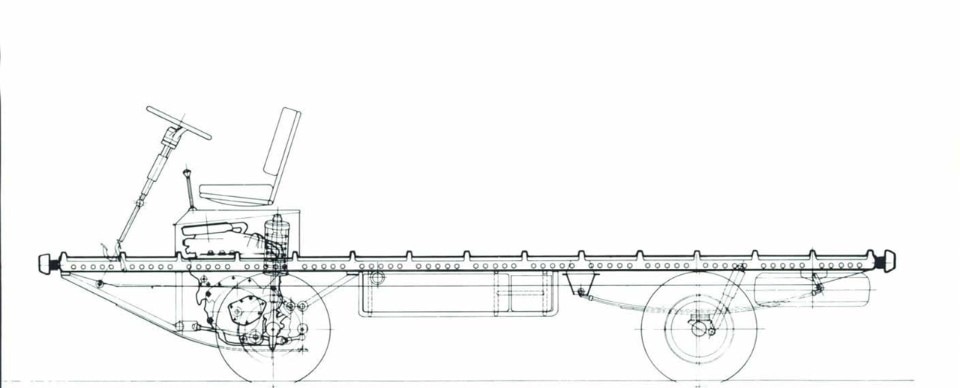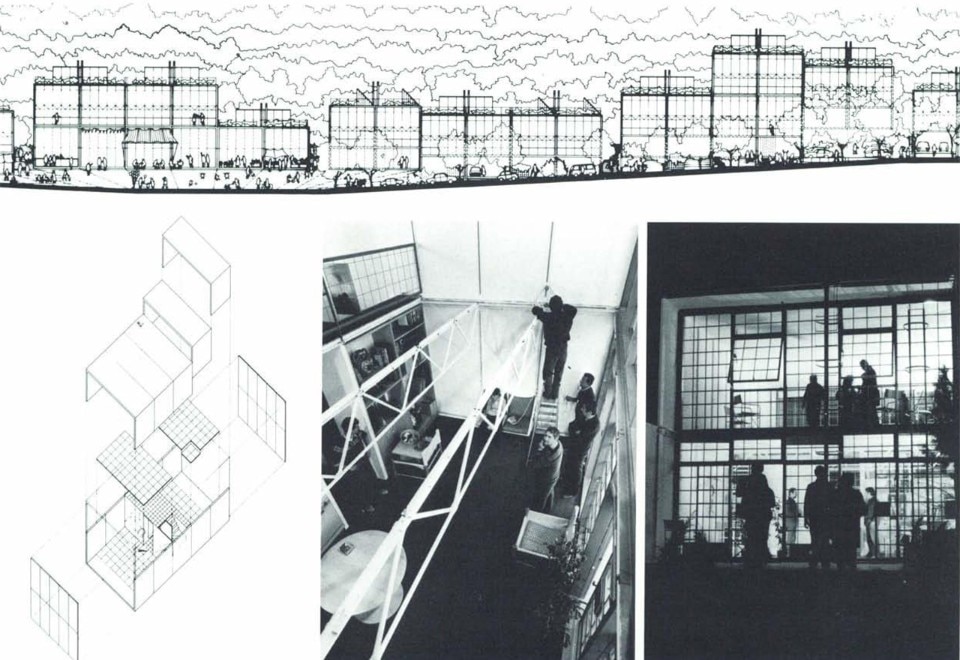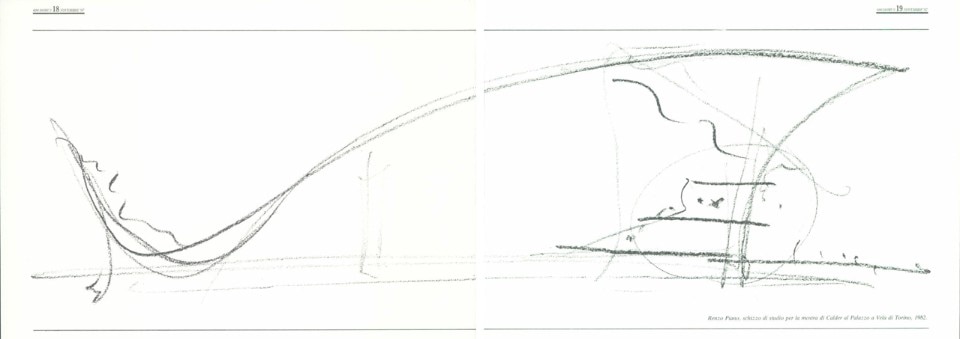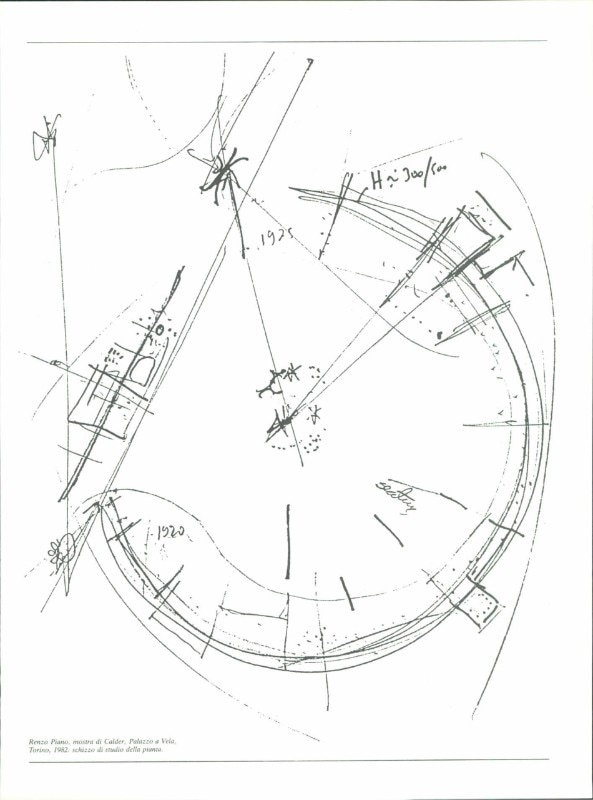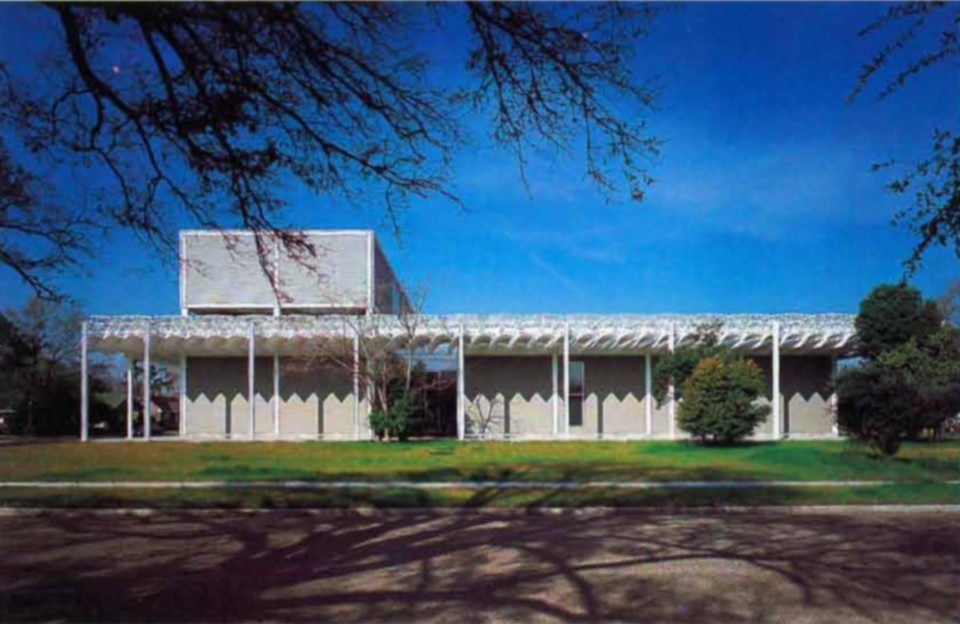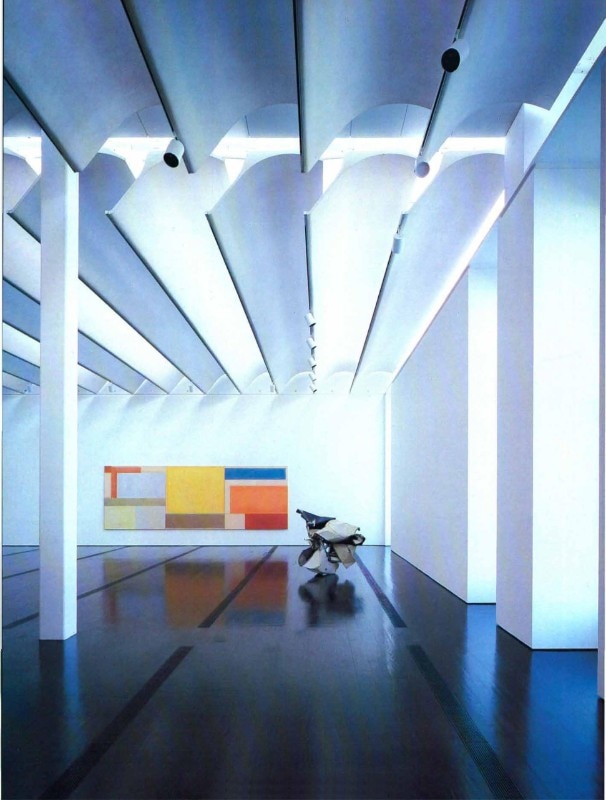“The longevity of an architectural reputation depends on a gift for continual innovation and redefinition, but not on a neurotic quest for novelty for its own sake. Renzo Piano, now in his mid-60s, has had a multistage career that is showing no sign of faltering, and indeed is shaping up to have a conspicuously long sweep characterized by an abiding architectural intelligence”.
“After Aldo Rossi’s death”, in fact, “Piano became Italy’s most prominent architectural export”. It was 2003 when Deyan Sudjic summed up in so few lines such an opulent and complex career (Ripensamenti, Domus 864, November 2003). The architect had just completed the Città della Musica in Rome and his twenty-year-long Turinese endeavour, the reconversion of the Lingotto factory; and momentarily breaking the golden rule of the here and now — the theoretical place where Piano has always operated, in order to be able to say things about the future — the media would turn to look at the flow of history and ask themselves: who is Renzo Piano?
The trailblazer of a rock-hard Genoese understatement that is as frustrating for those who have to write about it as it is fundamental within an architectural panorama that is still so noisy and protagonistic; the inventor who followed Jean Prouvé in his youth to escape the contractor’s life and get closer to architecture (Renzo Piano: un ricordo di Prouvé. Domus 807, September 1998); the researcher of details and materials that would give an identity to projects and eras; the listener of the spirit of a stratified society, whose different signals over time are processed and re-expressed in shapes and practices. In six decades of history, the architect of the Centre Pompidou, now a senator for life at the Italian Parliament, has met Domus more than once, disclosing and sharing all these facets of his figure, quite in the same order we just proposed, with such a deep critical insight that turns the focal question from “Who is Renzo Piano?” to “What do architects do?”
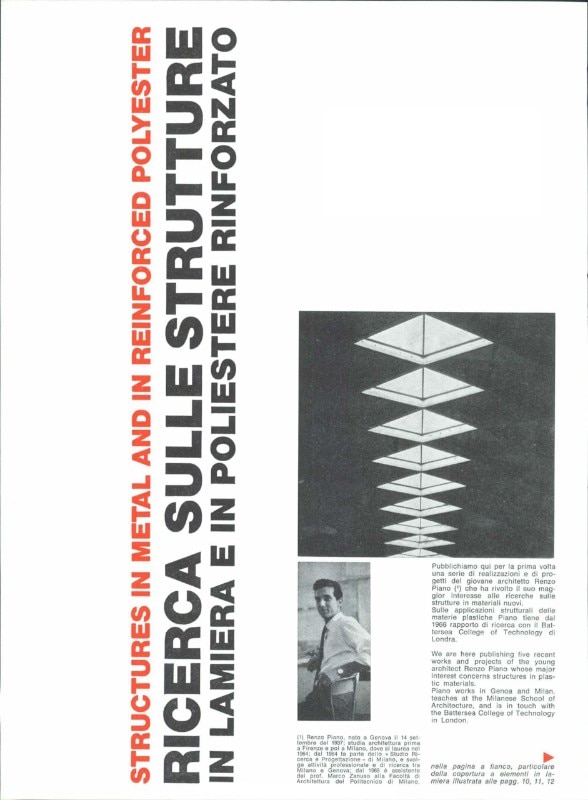
Despite how often he has been associated to a prophetic image, Renzo Piano has spent much time letting his works, rather than his words, speak for him.
In 1967 Domus published the prototypes of lightweight structures that Piano developed with his family firm (Ricerca sulle strutture in lamiera e poliestere rinforzato. Domus 448, March 1967): these modular systems combining simple and innovative technology, intelligently exploiting geometric patterns as devices, were Piano’s debut as an inventor, so much that two years later, when presenting the project for his Genoa studio, an industrial machine grafted into the landscape, inaugurating High-tech and still reminiscent of Archigram, he emphasised how this project could relate to “…the ancient tradition that requires experimenters to first test the results of their research on themselves”. (Uno studio laboratorio. Domus 479, October 1969)
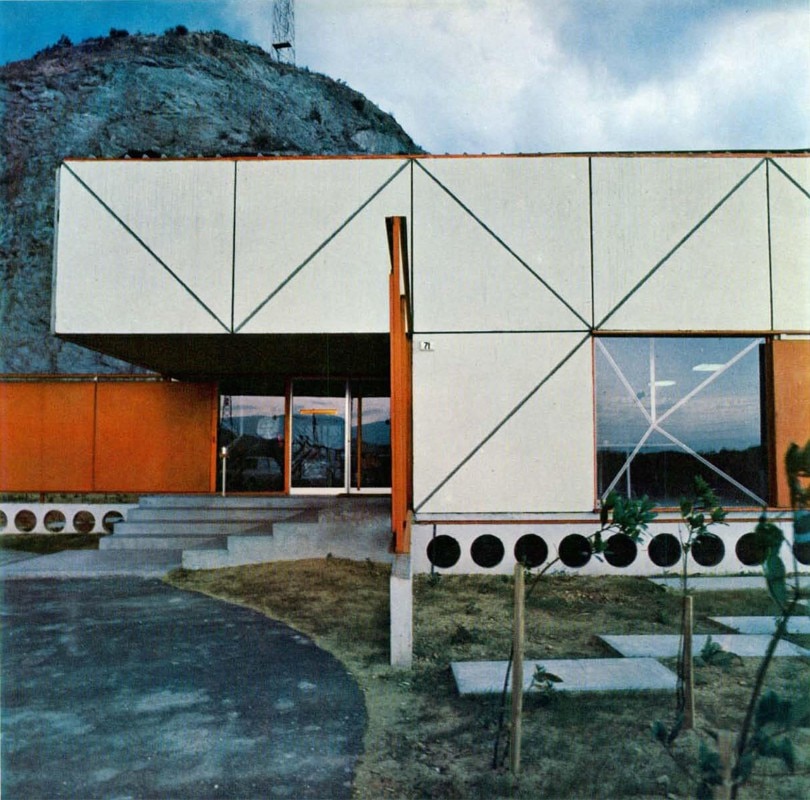
Our method of working is a bit unusual. It is more similar to the method of producing some consumer goods, things like the telephone, usual industrial products
At the beginning Piano would speak so little about himself, that his Italian work with Richard Rogers, the 1971 factory for Piero Busnelli in Novedrate, was first presented on Domus a lot later, and by someone else: writer Gianni Biondillo would in fact visit it, only in 2011 (Luoghi di produzione. Domus 950, September 2011).
Then, when the announcement of Piano and Rogers as winners of the Beaubourg competition in Paris arrived, also in 1971, all those different vocations we were reflecting about became apparent, including once again the use of indirect discourse: once again, it was the project report to speak for the designer, together with those drawings, all cranes, antennas and TV-flavoured collage inserts, that were about to set the foundations of an era and an aesthetic. The forthcoming Centre Pompidou was an object, a pop object, an object of its time, more precisely a communicating tool, prioritizing pure communication rather than the exhibition of structure and technological innovation, “… a structure bearing /bringing information, both inside and outside”. (Piano+Rogers=Beaubourg, Domus 503, October 1971)
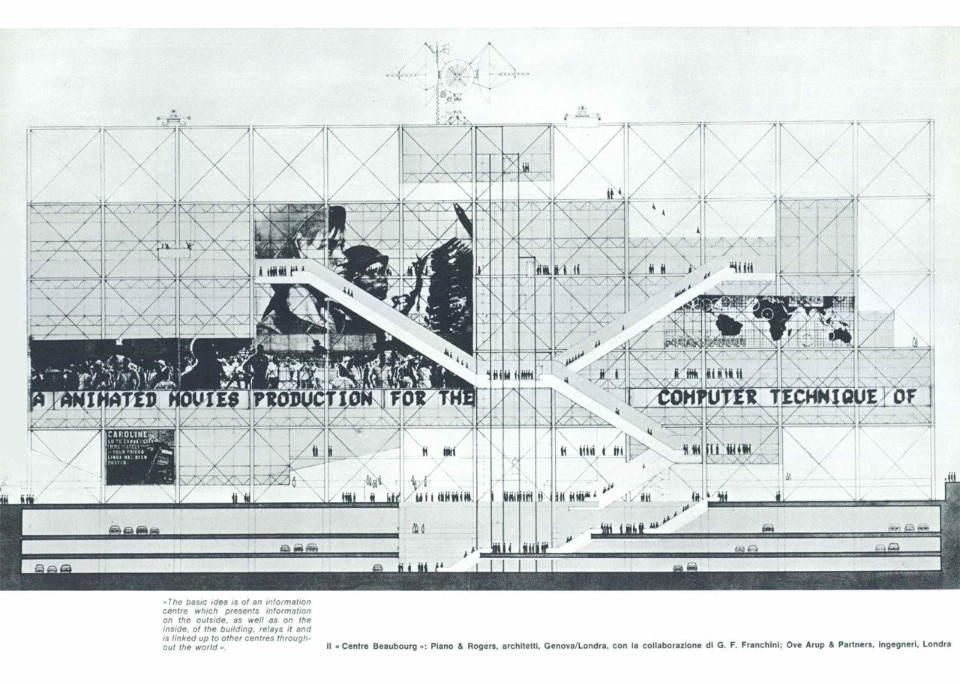
After a long construction period, not lacking in vicissitudes and direct attacks to such stranger entity that some would even attempt to exclude from the field itself of architecture, in 1977 the Centre Pompidou opened to the city and the world; similarly, Piano would finally open up to Domus in two rich conversations, with Cesare Casati and then with Pierre Restany, in which we discover a great deal about the nature of the project, but above all about the narrative view gaze through which it was seen by those who had conceived it: “…we created a building which is a container-utensil (…) for operations and actions as well as objects; a utensil within which, and with which, one can operate creatively in different fields, from art to research, in the field of construction, the environment and communication. A flexible and evolutive space. (It’s a very beautiful idea: seen in physical terms, it becomes evident that to carry out this type of construction, with floors measuring 50 m by 170 m of free span and a 500 kg overcharge per square meter of flooring for reasons of flexibility, is no joke)”.
To confirm the intentions of the project team in interpreting the initial request, Piano would then repeat their point after a few months of operations of the Centre: “…It has always been conceived as an active implement of culture, and you know very well that culture is not sectorial. Culture is life, it is the public’s way of reacting, it is their way of gaining awareness of certain facts. Don’t you think so? And so I don’t mind a bit if this awareness is achieved on a level of reading or in terms of coming to notice a work of art, or of seeing a film”. (Parigi: l’oggetto funziona!, Domus 575, October 1977)
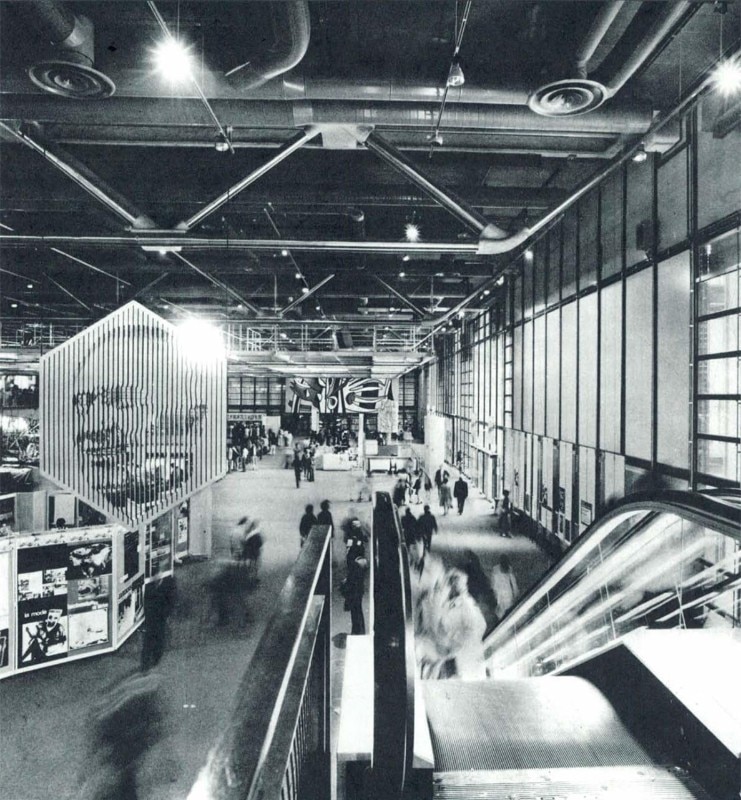
What I'm interested in is ‘doing architecture’. I try to work in a completely normal way, one which is not governed by any high moral standard
The 1980s, which began shortly afterwards, were therefore surely driven by the great “Pompidou wave”, but those were also the years in which Piano formalised his first answer to the question he would deal with for so long: what do architects do?
For him, these were the years of a great leap in scale, of the definite establishment of a global practice, of close cooperation with Fiat as well, with the concepts for the Tappeto Volante (the Flying Carpet, literally a motorised metal+cement slab), after those that had led to the Ritmo, and with the transformation of the historic Lingotto plant in Turin: it was on that occasion, moreover, that his practice would start standing as a representation of architects as solvers of complex programmes, drawing effective solutions from thorough listening and interpretation.
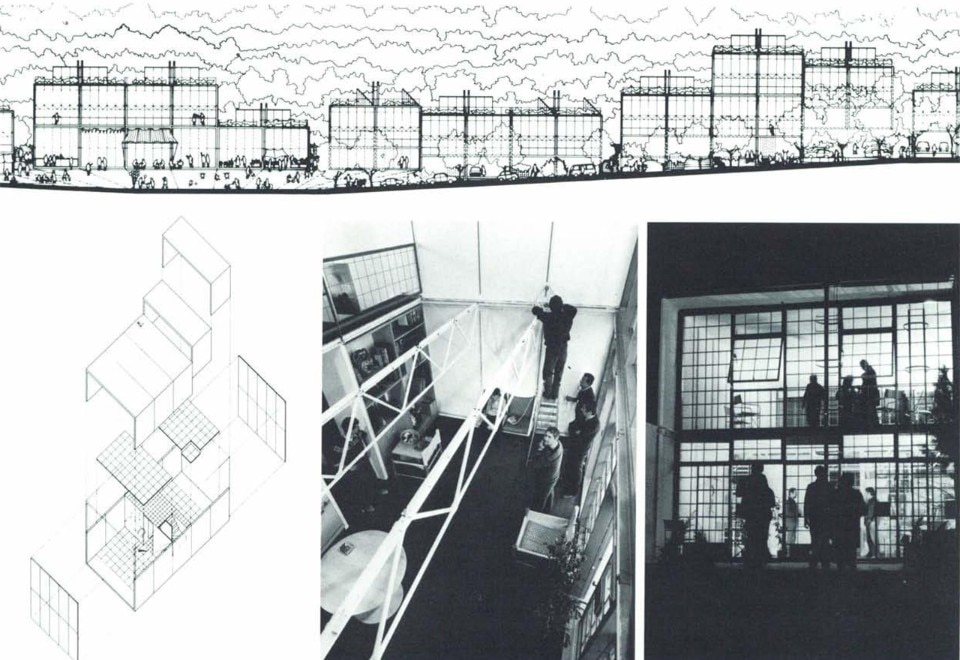
In fact, when Piano met Domus again in 1981 (Domus 617, May 1981), the point was precisely to define what the architect’s profession, il mestiere dell’architetto, could be, ina mission which would combine craftsmanship, scientific methodology and synthesizing sensitivity : “The way I work is opposed to the division of the design process between people with rigidly defined and separate jobs. I prefer a kind of “craft” basis to architectural work, even when we’re dealing with extremely so phisticated areas of knowledge. This is a new professional image, a change from the useless architect – the architect who refuses to give detailed answers to real questions, responding only to senseless questions and letting himself go in the heady experience of an uncontrolled creative ego trip. (…) I believe that my work contains a constant search for firm objective assumptions: like scientific research and social demand. It’s true that my work in recent years has illustrated two concentrations of interest around technological research and social participation. Though at first glance opposed, these two nodes do in fact interrelate in a non-arbitrary manner, since in both cases they are able to link their own modes of production to a socially and functionally structured demand”.
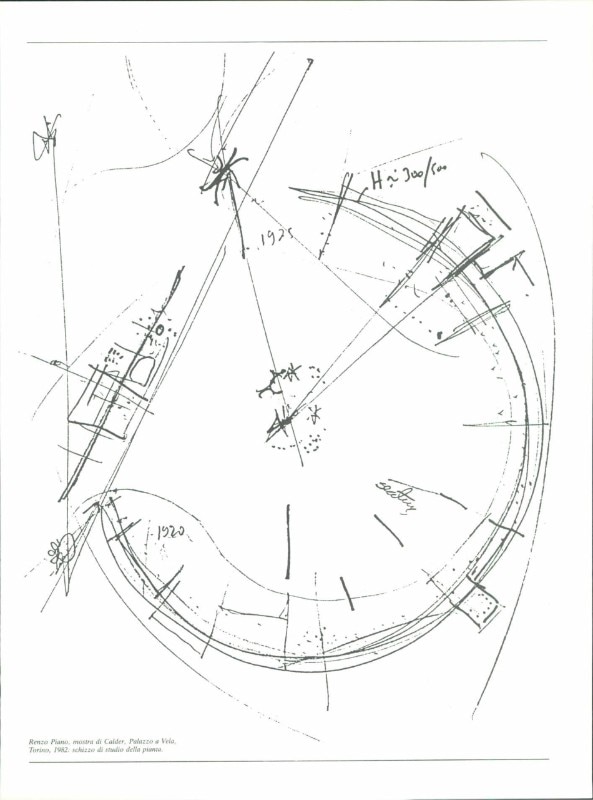
It’s unusual for me to start on a project straight away. I feel bound by a kind of discipline to restrain myself and allow elements to accumulate for a while, sometimes over a quite long period. It may even take a year
The spirit of the decade could bring up the value of technological solutions as a crucial moments of the project, writing its identity, a trademark for Renzo Piano, as much as the large white adjustable sunshades would be for the Menil Collection building, which opened in Houston in 1987. But with his practice Piano had already marked a difference, giving priority to society and space, instances from which material solutions would then originate. He reiterated this point that same year, in conversation with Vittorio Magnago Lampugnani: “…There is a strong wish to dream. This desire of mine to contribute towards dissolving this great confusion and to construct a kind of architectural language, also composed of memory through both materials and forms, is a sort of Utopia”. (From the archive. Renzo Piano: sovversione, silenzio e normalità, Domus 688, November 1987).
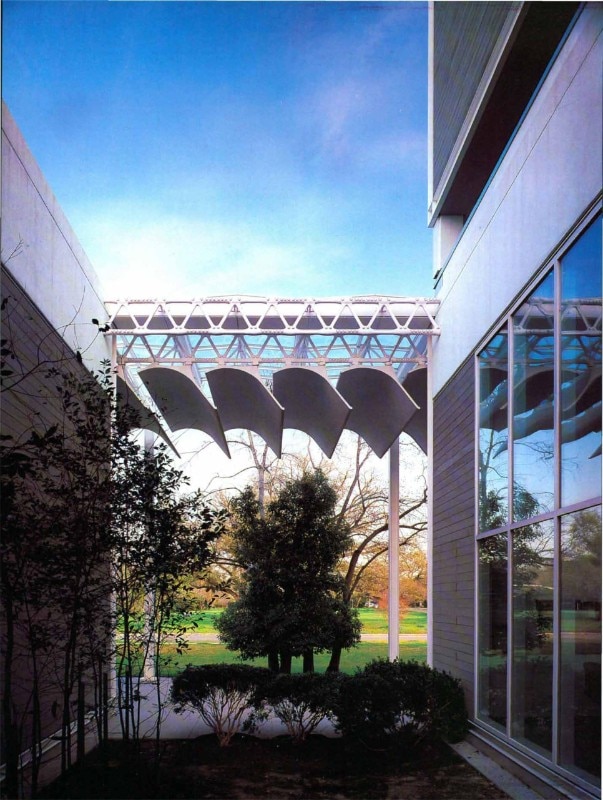
This vision about architects listening and synthesizing different trajectories gets clearer and clearer: “The question of listening and silence is very important and complex; it is not one of absolute blind obedience. Likewise with participation which consists in disobeying, but in the sense that we strive, understand and at a certain point carry out our diabolic task of bringing together everything that has been understood and in the way it has been understood (…)The architect can never abandon his specific role of providing the form”.
Those were the years in which Piano would stand precisely in the position he had so clearly outlined, proceeding on what he had seen as parallel planes, “…one starts from what is general and the other from what is particular. These two areas meet and, thereafter, remain linked together”.
Opening image: Renzo Piano. Photo Giovanni Del Brenna


